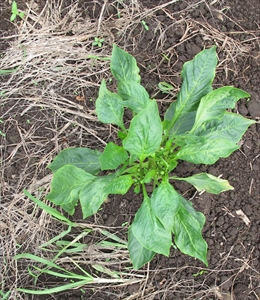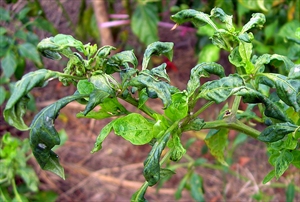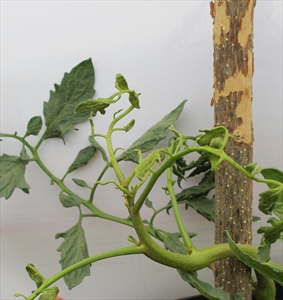- Worldwide distribution. Capsicum, chilli, tomato are the main hosts, but also on many other crops, e.g., bean, eggplant, papaya, mango and avocado. An important pest.
- Mites are 0.15 mm, and cannot be seen by eye alone. They live in the buds, feeding on the leaves causing shoots to twist, curl, turn brown, and stop growing. Worse under shade or in screenhouses.
- Cultural control: if only a few plants have symptoms, pull out and burn; if many, replant; do not plant next to older infested plants, or downwind from them.
- Chemical control: garlic, derris, wettable sulphur, abamectin; use soap, white or horticultural oil (repeat after 7 days as these chemicals do not kill eggs).








